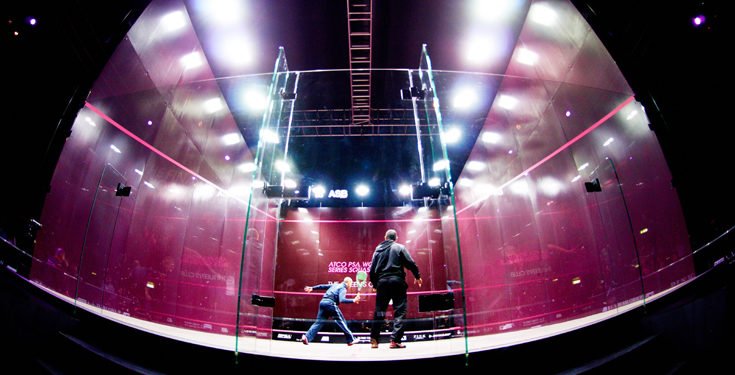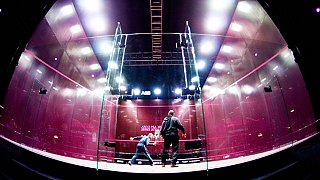We know that the following information may be a bit “dry” but we have had lots of requests asking “what makes the difference?” We will try to go through the major aspects and make it as understandable as possible. A source of information is also ASB’s exclusive glass manufacturer, Saint-Gobain. Also their product specification/declaration are in accordance with international norms EN 15804 and ISO 14025.
Product description and description of use
SGG SECURIT is a thermally toughened safety glass. The toughening process provides a significantly increased resistance to mechanical and thermal stresses in comparison to conventional annealed glass. If the glass breaks, it fragments safely into small pieces with dulled edges.
SGG SECURIT complies with the requirements of the standard EN 12150 regulation.
Regarding mechanical performance
- Impact resistance: Its enhanced impact resistance enables an 8mm sheet of SGG SECURIT glass to withstand a 500g steel ball dropped from a height of 2m. In comparison, the same ball dropped from a height of 0.3 m would break a piece of 8mm annealed glass. SGG SECURIT has been tested in accordance with EN 12600 (pendulum test).
- Bending strength: SGG SECURIT is significantly more resistant to flexural stress than conventional annealed glass. This resistance is characterized by a bending strength in the region of 120 MPa (EN 12150).
- Resistance to thermal stress: SGG SECURIT can withstand temperature differences of up to 200°C. In comparison, this temperature difference is around 30°C for ordinary, annealed glass.
- Tempered glasses (especially squash court glass) are classed 1C3 and follow the standard EN 12550.
Manufacturing process
Batch mixer
Mix of raw materials (silica, soda ash, lime, feldspar and dolomite) to which is added recycled glass (cullet) and other compounds depending on the desired colour and properties.
Fusion Furnace
Raw materials are melted at 1,550°C in a furnace.
Float
The molten glass is fed into a bath of molten tin. The glass floats on this flat surface and is drawn off in a ribbon. Serrated wheels, or top rolls, pull and push the glass sideways depending on the desired thickness (from 2mm to 19mm).
Annealing Lehr
The glass is lifted onto conveyor rollers and passes through a controlled cooling tunnel measuring more than 100 metres in length. It is approximately 600°C at the start of this step, the glass then exits the lehr at room temperature.
Cutting and stacking
The glass is automatically cut across its length and width. The sheets of glass are raised by vacuum frames that then place them onto glass stillages.
Quality
Automatic inspections and regular samples are taken to check the quality of the glass at each step in the glassmaking process.
Storage and transportation
The stillages are placed on storage racks in the warehouse.
Environment
Use of recycled cullet, installation of pollution abatement systems and closed circuit management of water: every measure is taken to limit the consumption of energy, extraction of natural resources and the production of waste and emissions into the atmosphere.
After the production, the squash court glass is processed:
Cutting
Flat glass is manufactured in sheets up to 6 x 3.210 metres in size. Before tempering, each sheet is lifted using suction cups and placed on the cutting table where a diamond glass cutter scores the glass to the required size. Each piece is then automatically or manually broken out.
Processing and edge working
Once cut to the required size, the glass can be treated to improve its functionality, highlight its appearance or personalize it even further. There are many types of decorative processing: edge working, polishing, shaping, drilling of holes and notches, sand blasting, engraving…
Washing
The glass passes through a washing machine where it is carefully cleaned using brushes and special cleaning solvents. It is then dried quickly to avoid any impurities on the glass.
Tempering Furnace
The glass then passes to the tempering furnace where it is heated to 600°C.
Toughening
The glass is very rapidly cooled by air blowers. Within seconds it reduces to 300°C. This sudden drop in temperature fuses any external coatings to the glass and hence strengthens its mechanical and structural resistance.
Stacking and transport
A stacking system lifts the glass sheets vertically using suction cups, placing a thin layer of interleafing lucite powder between each sheet for protection against scratches. These are then safely transported in special vans.
Specific advantages of the ASB ShowGlassCourt
We use the best quality squash court glass and production technology (explained above), to guarantee the best possible result.
Engineered OneWay® technology
OneWay® technology works through black dots on the outside of the glass and coloured dots on the inside. In comparison to other manufacturers that use foils (not resistant to age, UV rays and scratches) we print these dots with ceramic paint onto the glass and then burn these into the glass permanently. ASB’s OneWay® glass also differs to manufacturers using the same ceramic screen print process because the accuracy of the printing process determines the way the human eye can see into the ShowGlassCourt and the process we use has a method with the best results we could find world wide. The difference is of high importance for the viewing of the game as well as the appearance of the court.
All Glass Construction
No metal structure to hold the glass or elements of the lighting system. The lighting system and glass panels are fixed on glass fins. This allows for better visibility and a better overall appearance of the court.
Large Bottom Panels
Allow for better assembly and enhanced viewing characteristics by minimizing to one edge between the large bottom panel and smaller top panel. Also, the playability is improved due to less gaps. This is a unique feature of special sized squash court glass for an the ASB ShowGlassCourt.
Bright Colours
As the printing process is very complicated, it took us many years of development to be able to produce the court in vibrant and bright colours. The combination of our intensive light system and specially chosen colours make the colours look very vivid and make the ASB ShowGlassCourt stand out as the professional squash arena of choice.
Consistency of colour
Where there are gaps between panels, the distance between the coloured dots is still the same. Our printing technique allows printing right to the edge of the panels and therefore minimises the gap between the coloured dots from panel to panel.

 Previous post
Previous post
